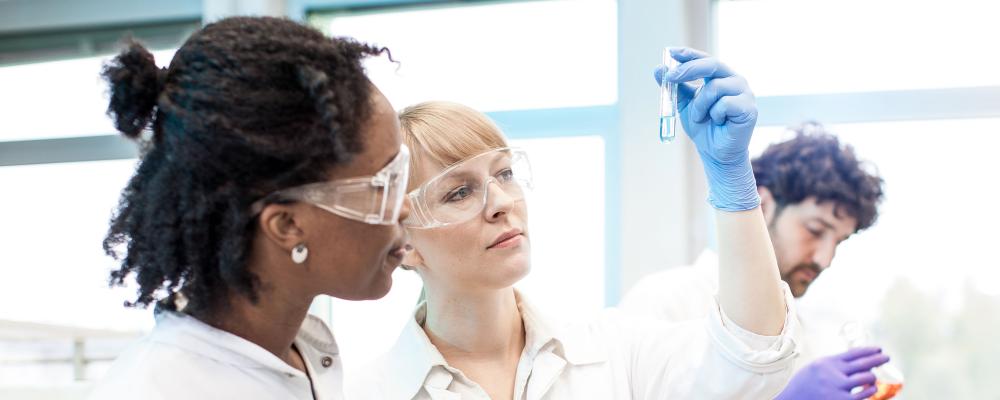Portal Our Laboratories

Virology, Immunology and Parasitology in Poultry and Rabbits (VIPAC) Unit of the Ploufragan-Plouzané-Niort Laboratory
Head of Unit: Béatrice Grasland
Deputy Head of Unit: Ghislaine Le Gall
Deputy Head of Unit: Audrey Schmitz
The Virology, Immunology and Parasitology in Poultry and Rabbits (VIPAC) Unit contributes to the protection of animal health, especially that of poultry and rabbits. It carries out reference, surveillance and research activities in order to control regulated viral diseases (avian influenza, Newcastle disease) and unregulated diseases when they are of economic importance for the poultry (infectious rhinotracheitis in turkeys, infectious bursal disease, avian coronaviruses) or rabbit (calicivirus in rabbits and hares) sectors. The unit also studies parasitic diseases in birds (due to Coccidia and helminths).
Some of the diseases studied also present a risk to public health because of their potential for transmission to humans. In addition, the unit monitors emerging viral diseases in the poultry and rabbit sectors, in order to be able to take rapid action in the event of their emergence in France.
Reference activities
The unit carries out reference laboratory missions on four avian viral diseases:
- nationally, for avian influenza and Newcastle disease;
- internationally for the World Organisation for Animal Health (OIE) on infectious bursal disease in chickens and infectious rhinotracheitis in turkeys.
The unit's work for its national mandates is subject to quality assurance (accredited by COFRAC according to NF EN ISO/CEI 17025 and NF EN ISO/CEI 17043 for the organisation of inter-laboratory proficiency tests).
Surveillance activities
The unit contributes to the programmed surveillance (annual serological surveillance of avian influenza viruses and study of low pathogenic avian influenza viruses in ducks) and outbreak surveillance of diseases for which the unit has a national reference mandate. It also participates in the National epidemiological surveillance platform for animal health (ESA).
Research activities
Research, reference and scientific and technical support activities are organised around four general themes focusing on the pathogens studied in the unit:
- contribute to pathogen surveillance by developing and updating diagnostic methods;
- search for specific molecular or antigenic markers of particular viral or parasitic phenotypes;
- understand biological, evolutionary or host interaction mechanisms (mechanisms of virus evolution, study of the molecular basis of interspecies transmissibility, study of the development cycle of parasites);
- contribute to the study of ways of controlling diseases in livestock.
The avian influenza team is a member of the ResaFLU research group on influenza viruses.
Main ongoing projects
COVRIN (2021-2023)
One Health research integration on SARS-CoV-2 emergence, risk assessment and preparedness.
Funding: One Health EJP
The project aims to study the crossing of the species barrier of the SARS-CoV2 coronavirus. The project has two main objectives: to identify the factors determining emergence and spread of SARS-CoV-2, and to generate data and build models for assessing the risks associated with this virus.
Find out more about the project
ALTERANTICOX (2019-2023)
Development of plant extracts for the formulation of complete solutions for vaccine support and natural anticoccidial solutions
Funding: Brittany region, Pays de Loire region, BPI France
The aim is to develop alternatives to coccidiostatic additives (used to combat Coccidia, a group of parasites affecting chickens), which complement anticoccidial vaccines. The project is organised around two themes: development of a natural anticoccidial solution, and support for anticoccidial vaccines by reducing the negative consequences of these vaccines on zootechnical performance in chickens.
LAGMED (2019-2023)
Improvement of preventive actions to emerging lagoviruses in the Mediterranean basin: development and optimisation of methodologies for pathogen detection and control
Funding: PRIMA programme (Partnership for Research and Innovation in the Mediterranean Area. For France: French Research Agency)
The project aims to develop and optimise methods for the detection and control of the new genotype of rabbit viral haemorrhagic disease virus (RHDV2), in order to reduce its socio-economic impact and better prevent the emergence of new pathogenic lagoviruses in European and African countries around the Mediterranean.
GUMBOPAT (2020-2022)
Development of an in vitro model to predict the pathotype of vaccine or field strains of avian infectious bursal disease virus
Funding: ANSES, Saint-Brieuc Armor Agglomeration and Côtes d'Armor departmental council
Partners: Ludwig Maximilian University of Munich (Germany), Spanish National Research Council.
The aim of the project is to develop an in vitro system for predicting the pathogenicity of strains of infectious bursal disease virus collected in the field, as an alternative to animal testing. Infectious bursal disease, or Gumboro disease, affects birds.
PREDYT (2019-2022)
Molecular predictors and transmission dynamics of avian influenza viruses
Funding: Avian influenza research fund (FRIA 2019)
The objective is to improve knowledge of the highly pathogenic H5N8 viruses responsible for the French avian influenza epizootic of 2016-2017, by analysing their transmissibility and identifying their virulence factors using reverse genetics techniques.